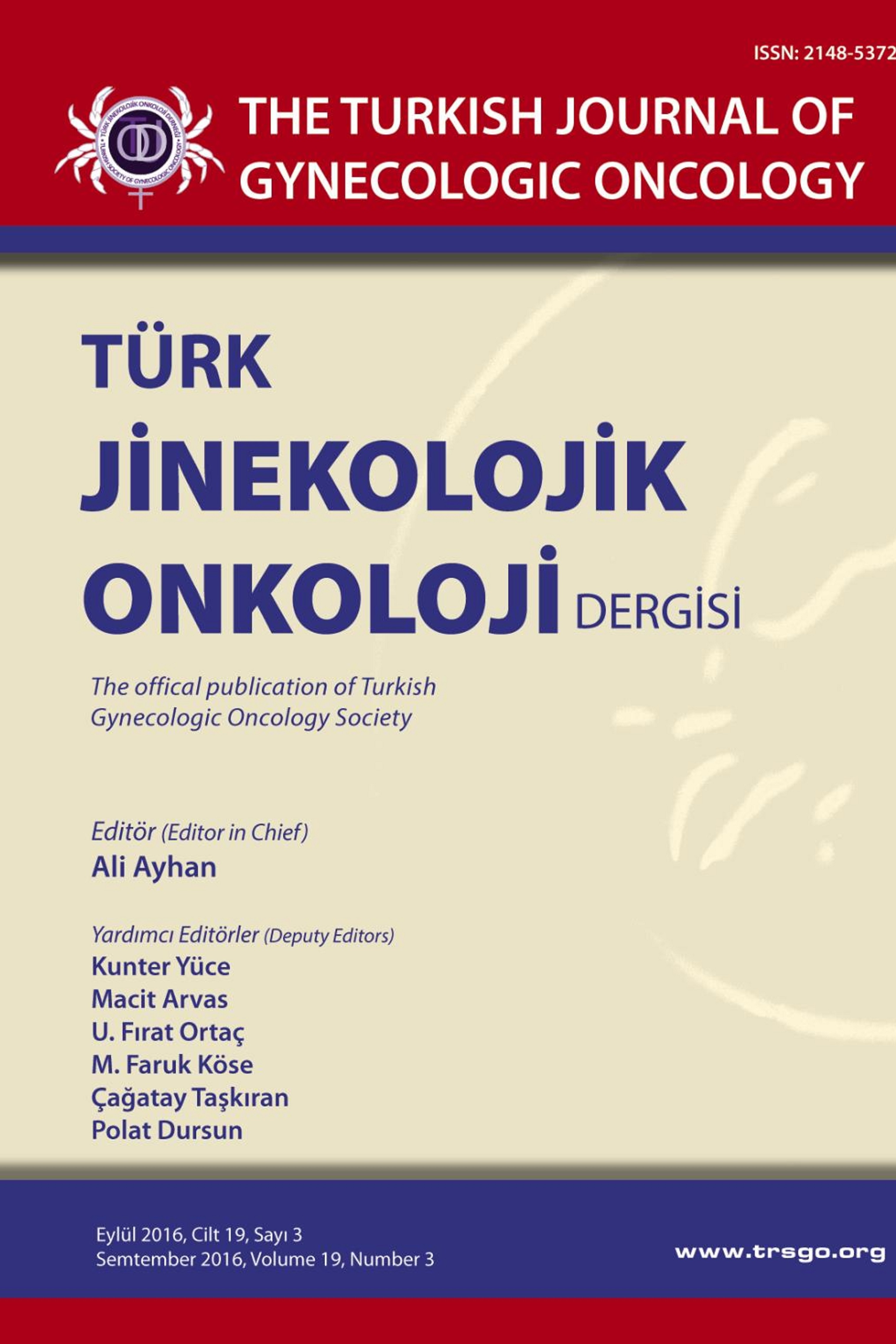SERVİKAL İNTRAEPİTELİYAL NEOPLAZİLERDE HPV SUB-TİPLERİNİN ARAŞTIRILMASI
Giriş: Servikal kanser, tüm kadın kanserlerinin %10'nu oluşturmakta olup, özellikle gelişmekte olan ülkeler için ciddi bir sağlık sorunu teşkil etmektedir. Günümüzde servikal kanser ve preinvaziv servikal lezyonlar ile Human Papilloma Virusun (HPV) %100'e yakın bir oranda ilişkisi olduğu gösterilmiştir. Materyal- Metod: Servikal sitolojik taramalarında anormallik saptanan 137 hasta çalışma kapsamına alınmıştır. Hastalar demografik özelliklerine göre sınıflandırılarak, ilk cinsel ilişki yaşı, partner sayısı ve kontrasepsiyon yöntemi sorgulanmıştır. Servikal sitoloji sonuçlarına göre dört çalışma grubu oluşturulmuştur (ASCUS, ASC-H, LSIL, HSIL). Sonuçlar: HPV pozitif hastaların yaş ve parite dağılımlarında istatistiksel fark saptanmamış, ancak partner sayısı ve ilk koitus yaşı açısından anlamlı fark saptanmıştır. Hastaların %35'i (n = 48) HPV saptanırken, %65 (n = 89) hastada HPV pozitif olarak tespit edilmiştir. Tip 16 (n = 21, %24) HPV subtipleri arasında en yüksek oranda saptanmıştır. HPV pozitif hastaların %61,8'nde (n = 55) tek HPV subtipi tespit edilirken, %28,5 (n = 25) hastada iki subtip, %3,8 (n = 3) üç subtip ve %5,9 (n = 5) hastada dört subtip izole edilmiştir. Tartışma: Bugün için servikal prekanseröz lezyonların ve serviks kanserininin oranlarını ülkemizde daha aşağı çekebilmek için, servikal sitoloji tarama programları yaygınlaştırılmalı ve özellikle risk grubundaki kadınlarda aşılama planlanmalıdır.
Introduction: Cervical cancer, is to create 10%of all female cancers, especially for developing countries constitutes a serious health problem. Today, preinvasive cervical lesions and cervical cancer and human papilloma virus (HPV) is shown to correlate with a rate close to 100%. Materials and Methods: Cytological screening of cervical abnormalities detected 137 patients were included in the study. Patients were classified according to demographic characteristics, age at first intercourse, number of partners and questioned the method of contraception. Four working groups have been created according to the results of cervical cytology (ASCUS, ASC-H, LSIL, HSIL). Results: Statistical difference in age and parity distribution of HPV-positive patients were found, but the number of partners, and the first coitus was no significant difference in age. 35%of patients (n = 48) HPV (-) was detected in 65%(n = 89) was found to be HPV positive patients. Type 16 (n = 21,%24) had the highest rates of HPV subtypes. HPV-positive patients, 61.8%in the (n = 55) were detected in a single HPV subtype, 28.5%(n = 25) patients, two subtype,%3.8 (n = 3) and 5.9%three-subtype (n = 5) subtype was isolated from four patients. Discussion: Today in our country for cervical precancerous lesions and cervical cancer with lower rates to attract, cervical cytology screening programs should be expanded, and especially women are at risk of vaccination should be planned.
